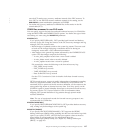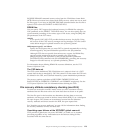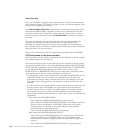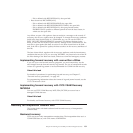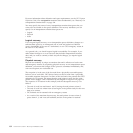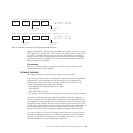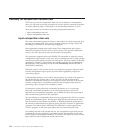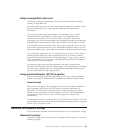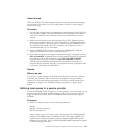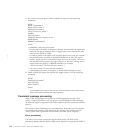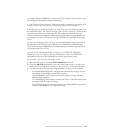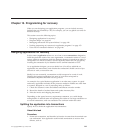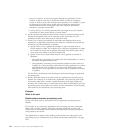
Output extrapartition data sets
The recovery of output extrapartition data sets is somewhat different from the
recovery of input data sets.
For a tape output data set, use a new output tape on restart. You can then use the
previous output tape if you need to recover information recorded before
termination.
To avoid losing data in tape output buffers on termination, you can write
unblocked records. Alternatively, write the data to an intrapartition disk
destination (recovered by CICS on a warm start or emergency restart) and
periodically copy it to the extrapartition tape destination through an automatically
initiated task. On termination, the data is still available to be recopied on restart.
If a controlled shutdown of CICS occurs, the previous output tape closes correctly
and writes a tape mark. However, on an uncontrolled shutdown such as a power
failure or machine check, a tape mark is not written to indicate the end of the tape.
For a line printer output data set, you could just choose to carry on from where
printing stopped when the system stopped. However, if you want to continue
output from a defined point such as at the beginning of a page, you may need to
use a journal data set. As each page is completed during normal CICS operation,
write a record to a journal data set.
On restart, the page that was being processed at the time of failure can be
identified from the journal data set, and that page can be reprocessed to reproduce
the same output. Alternatively, use an intermediate intrapartition destination (as
previously described) for tape output buffers.
Using post-initialization (PLTPI) programs
You can use initialization (PLTPI) programs as part of the processing required to
recover extrapartition transient data or to enable exits required during recovery.
About this task
There are two PLT phases. The first phase occurs before the system initialization
task is attached, and must not use CICS resources, because initialization is
incomplete. The first phase is intended solely to enable exits that are needed
during recovery processing. The second phase occurs after CICS initialization is
complete and, at this point, you may use PLT programs to customize the
environment.
For information on how to code the PLT, see the CICS Resource Definition Guide. For
programming information about the special conditions that apply to PLT programs,
see the CICS Customization Guide.
Recovery for temporary storage
This section deals with both backward and forward recovery of temporary storage.
Backward recovery
Temporary storage queues that are to be recoverable by CICS must be on auxiliary
temporary storage.
Chapter 12. Defining recoverability for CICS-managed resources 135



